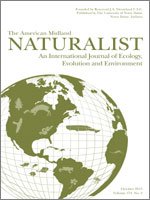Studies of pollination biology are largely diurnally biased, especially in plant species whose flowers conform to diurnal pollination syndromes. Though these syndromes can be useful in generating hypotheses regarding a species’ primary pollinators, they may also lead to incorrect assumptions. This study explores the relative contributions of diurnal and nocturnal pollination to fruit set in Lyonia lucida, an ericaceous shrub of the southeastern United States whose floral form suggests pollination by bumble bees. Floral visitation to L. lucida and pollen loads of visitors were quantified in a population of the species in Central Florida (U.S.A.), and the relative contributions of diurnal and nocturnal pollination tested. Mating system characteristics of L. lucida were also examined. Results show L. lucida flowers are visited mainly by nocturnal moths, who are capable of carrying large pollen loads, and nocturnal pollination is the primary driver of fruit set. In addition L. lucida at the study site shows severe barriers to selfing and strong pollen limitation. This is the first time a population of an ericaceous species has been shown to be pollinated primarily by nocturnal floral visitors and suggests pollination biologists should not be so quick to discount these potentially important pollinators.
How to translate text using browser tools
1 October 2015
Odd for an Ericad: Nocturnal Pollination of Lyonia lucida (Ericaceae)
John W. Benning
ACCESS THE FULL ARTICLE
It is not available for individual sale.
This article is only available to subscribers.
It is not available for individual sale.
It is not available for individual sale.





